The HTC One M9 Review: Part 1
by Joshua Ho on March 22, 2015 7:00 PM EST- Posted in
- Smartphones
- HTC
- Qualcomm
- Mobile
- Snapdragon 810
- One M9
System Performance: Snapdragon 810
We've been able to test Snapdragon 810 before, but it was only in the context of Qualcomm’s developer platform tablets and phablets, which have a higher possible TDP than shipping devices, and generally doesn’t have any need for battery life as these devices usually spend all of their time plugged into a charger. Thus, the One M9 represents our first experience with a Snapdragon 810 device with shipping software and hardware. HTC noted during the review process that our devices were running non-final software, and we received an OTA update that significantly changed the thermal throttling characteristics of the device, but this seems to have only affected performance in situations where the SoC was nearing maximum acceptable skin temperatures as performance in these benchmarks were relatively unchanged.
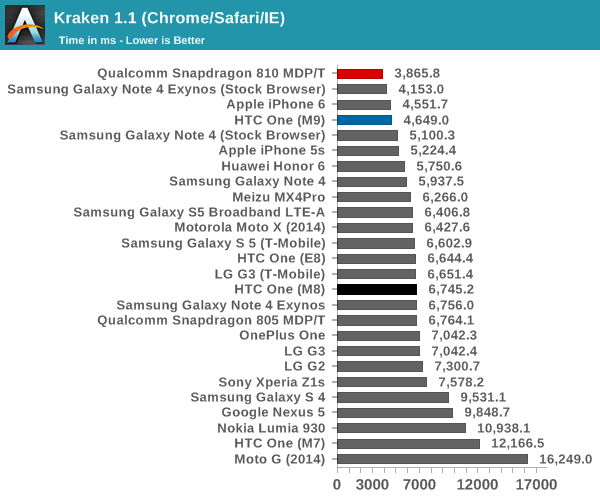
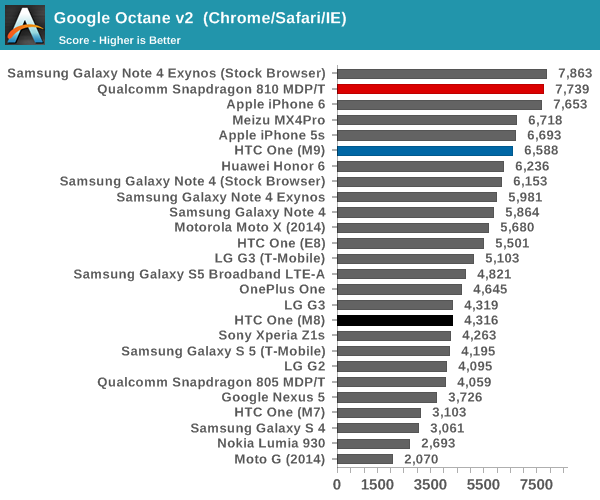

In our first few browser tests, we can see that the One M9 posts dramatically lower performance than the Snapdragon 810 MDP/T, which seems rather strange. However, using CPUBurn to try and load just a single thread reveals that without HTC’s CPU cheats, it’s basically impossible to get the A57 cluster beyond 1.5 to 1.6 GHz. It's important to emphasize that this isn't new behavior, as this was present on pre-release software as well, which means that HTC didn't do this at the last minute.
For those that are unfamiliar with how HTC's CPU cheats work, HTC continues to rely on some level of benchmark detection, and it seems that when a benchmark is detected it enables a "High Performance" mode in the developer settings with no option to disable this mode. It's possible to work around this mode by using benchmarks that evade such detection mechanisms (and we do), but it's also possible manually toggle this mode on and off if a benchmark isn't detected. This benchmark mode appears to relax throttling constraints, but more obviously it enables one to go from a maximum of 1.6 GHz to the rated 2.0 GHz of the Snapdragon 810 for extended periods of time. However, even in this mode we can see that a sustained load of a single thread on the A57 cluster will cause the cluster to throttle to 1.7 GHz in this mode, while without this mode enabled we see that a single thread will eventually cause the A57 cluster to clock around 1 to 1.2 GHz. If the normal governor does allow the SoC to reach 1.9 GHz, I can't really perceive the amount of time that it does reach such a speed.
The most concerning result is WebXPRT, which is a bursty workload that runs over a few minutes, which suggests that we’re already seeing thermal throttling in the M9.

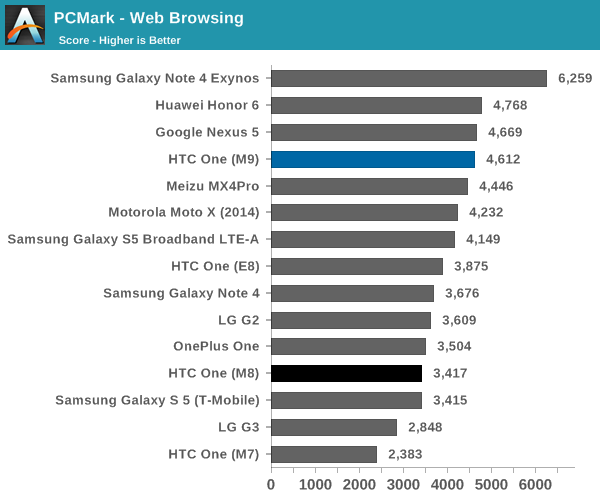
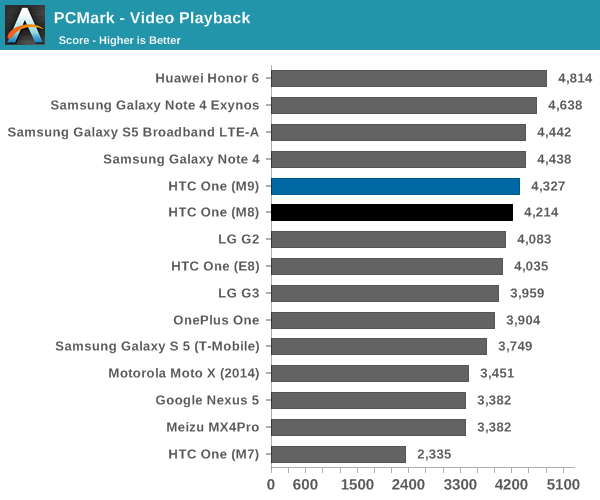
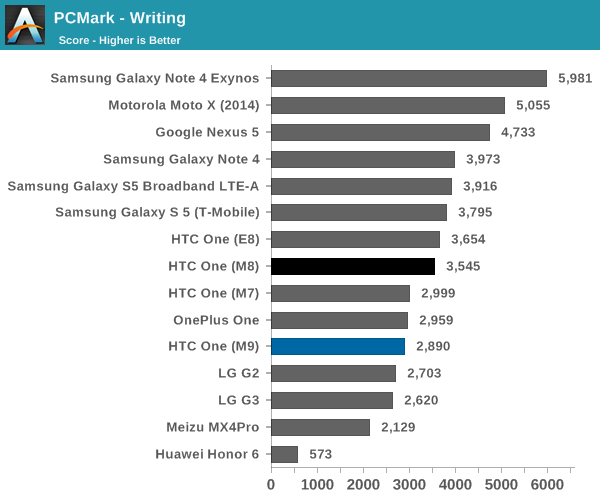
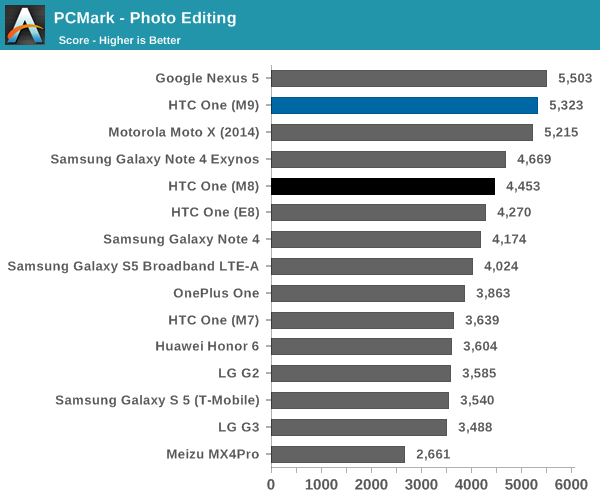
In PCMark, which is a benchmark that tends to focus strongly on race to sleep scenarios, we can see that the Snapdragon 810 appears to significantly trail behind the Exynos 5433, which is on a similar process node. It's hard to say whether this is due to the scheduler configuration or differences in the physical design of the SoC, but at any rate this is another concerning performance from the SoC of the One M9.
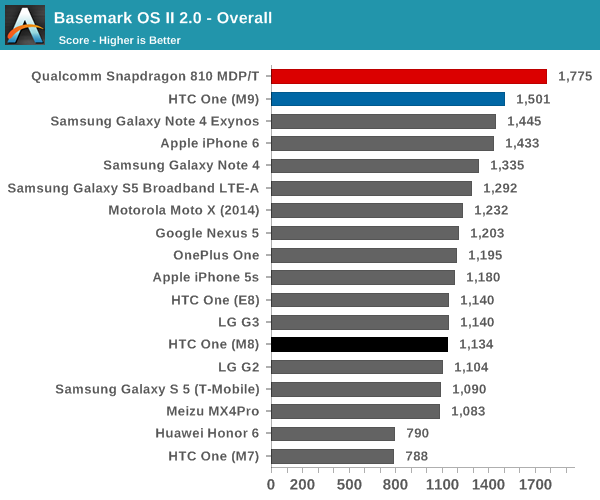

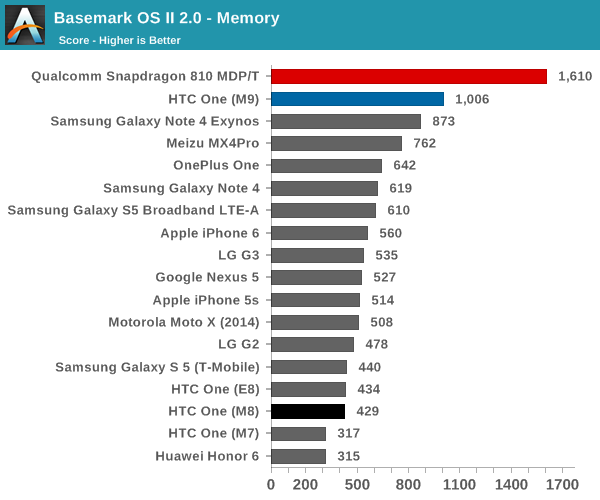
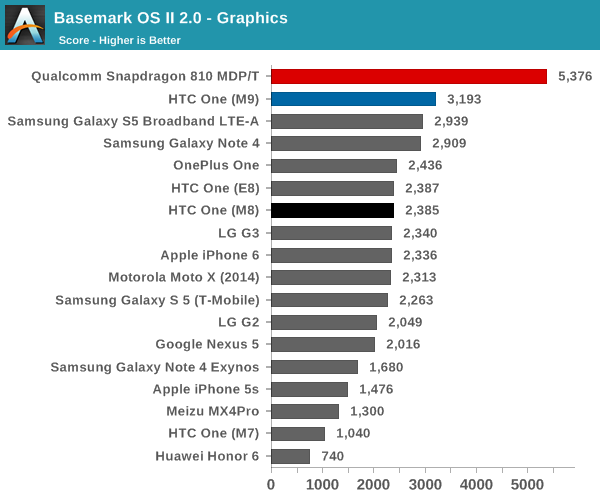
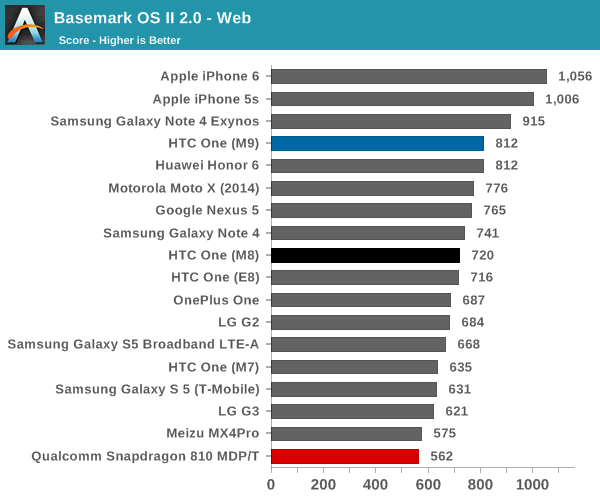
Moving on to the general system performance tests, we see that the M9 delivers a reasonable improvement in performance over the M8, but most of the difference seems to come from the GPU and storage performance rather than anything else that was tested. Overall, the Snapdragon 810 really isn’t off to the best start in any test we’ve thrown at it so far. To see if Snapdragon 810 has any redeeming features we’ll look at GPU performance next.


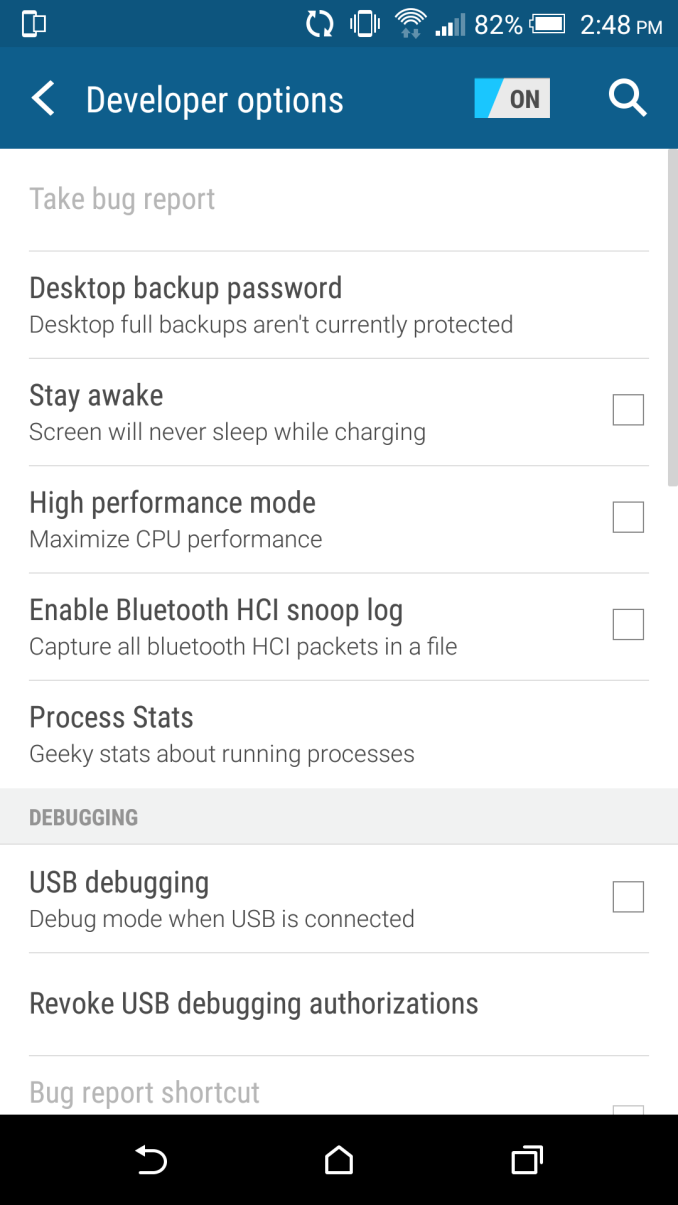








132 Comments
View All Comments
PC Perv - Sunday, March 22, 2015 - link
"Unfortunately, with the move to the Peel remote application it seems that the default application no longer supports receiving OR codes."What the heck doss that mean?
Ryan Smith - Sunday, March 22, 2015 - link
IR codes, we meant.PC Perv - Sunday, March 22, 2015 - link
Really, so can I use it as a remote or not?JoshHo - Sunday, March 22, 2015 - link
The key distinction is IR receiving vs transmitting. Transmission is generally universal, receiving is generally not as universal among smartphones.leexgx - Friday, March 27, 2015 - link
to bad you do not compare 2 generations back as well (in this case the M7) as most people have 2 year contracts not 1 year (as i have the M7 i had to look at the charts)so GPU side seems to be twice as fast CPU side seems to be 50% faster than the M7 (and that horrible cam on the M7 is now 20MB witch should of happened on the M8) battery looks like its going to be good (but need the m9 part 20) but most of that is due to Larger battery (witch in my view should be 3000-3100mAh
PC Perv - Sunday, March 22, 2015 - link
"Doing some quick calculations would mean that the M9 consumed about an average of 1.22 watts throughout the test, while the M8 consumed about an average of .91 watts throughout the test."Average of what? Per minute? Per hour? Per run? Average throughout the test?!
"Running this same test on HSPA+ actually increases the gap in efficiency between the M8 and M9, but the difference is around 5%."
5% of what exactly?
"..in PCMark I noticed that the M9 reached about 40C, which brings it close enough to the new update's maximum skin temperatures that all three tests must be re-done."
Huh?
In page 2, is the charge time measured with the supplied charger (1.5A) or using a 2.0A charger?
I only finished reading the first 2 pages.
Ryan Smith - Sunday, March 22, 2015 - link
"Average of what? Per minute? Per hour? Per run? Average throughout the test?!"An average of 1.22 watts throughout the duration of the test.
wiz329 - Sunday, March 22, 2015 - link
A Watt is a unit of power, not energy, so it makes perfect sense.It's an average power usage throughout the entire test. It used X energy per time on average throughout the entire test.
garbagedisposal - Sunday, March 22, 2015 - link
Are you genuinely retarded?I feel for AT's writers who have to hold back when they reply to comments by idiots like these.
GC2:CS - Monday, March 23, 2015 - link
One watt = one joule per second